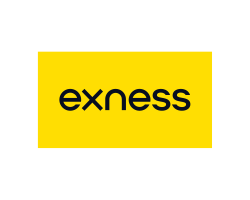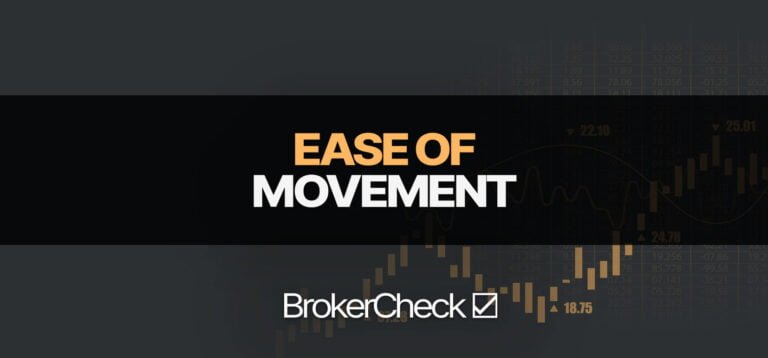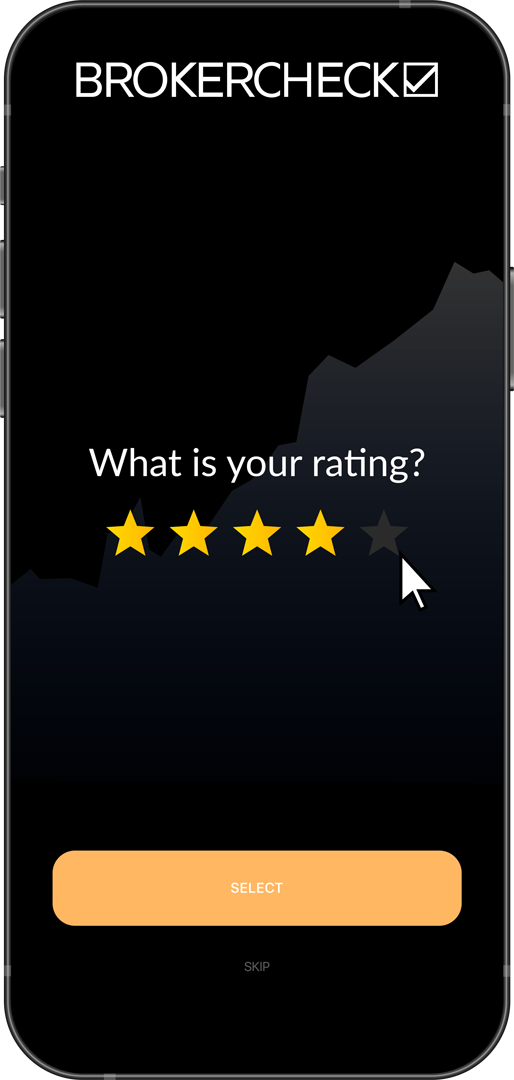1.1. Overview Of Support And Assistant
Support and Resistance (S/R) are cornerstone concepts in technical analysis, serving as the foundation for many trading strategies across various financial markets. These powerful tools help traders identify key price levels where market dynamics are likely to shift, potentially leading to significant price movements.
At its core, technical analysis is based on the principle that historical price action can provide insights into future market behavior. Support and resistance levels epitomize this concept by highlighting areas where supply and demand forces have previously influenced price direction. By recognizing these critical zones, traders can make more informed decisions about potential entry and exit points for their trades.
The importance of S/R in identifying potential price movements cannot be overstated. These levels act as psychological barriers for market participants, often leading to predictable reactions when prices approach them. For instance, a strong support level may trigger buying interest, causing prices to bounce upward, while a formidable resistance level might inspire selling pressure, potentially reversing an uptrend.
As we delve deeper into this article, we’ll explore the intricacies of support and resistance, methods for identifying these levels, and how modern trading platforms like MetaTrader 5 (MT5) have revolutionized this process through automated indicators. By mastering the art of recognizing and interpreting S/R levels, traders can enhance their market analysis, improve trade timing, and ultimately strive for more consistent results in their trading endeavors.

| Key Points | Description |
|---|---|
| Definition | Support and Resistance (S/R) are fundamental concepts in technical analysis |
| Purpose | Help identify potential price movements in financial markets |
| Basis | Rooted in the analysis of historical price action |
| Significance | Act as psychological barriers influencing market participant behavior |
| Application | Used to determine potential trade entry and exit points |
| Evolution | Modern trading platforms offer automated S/R identification tools |
2. Understanding Support and Resistance:
Support and resistance are pivotal concepts in technical analysis that help traders identify potential turning points in price action. Let’s break down these concepts and explore how they form and function in the market.
Support: Support is a price level where buying pressure is strong enough to halt or reverse a price decline. It acts as a “floor” for the price, where demand typically outweighs supply. When the price approaches a support level, it often bounces back up as buyers step in, perceiving the asset as undervalued or as a good buying opportunity.
Resistance: Resistance, conversely, is a price level where selling pressure is strong enough to halt or reverse a price rise. It acts as a “ceiling” for the price, where supply typically outweighs demand. As the price approaches a resistance level, it often pulls back as sellers enter the market, considering the asset overvalued or seeing it as a good opportunity to take profits.
Formation of S/R Levels: Support and resistance levels are formed by past price action and are heavily influenced by psychological factors. Here’s how they typically develop:
- Historical Price Points: S/R levels often form at prices where the market has previously reversed direction. These points represent areas where buyers or sellers have shown significant interest in the past.
- Round Numbers: Psychologically significant price levels, such as whole numbers (e.g., 50.00, 100.00), often act as S/R levels due to the tendency of traders to place orders at these “clean” price points.
- Previous Highs and Lows: Swing highs and lows from past trading sessions frequently become future S/R levels as traders remember these points and act accordingly when price revisits them.
- Technical Indicators: Levels derived from popular indicators like moving averages or Fibonacci retracements can also serve as S/R levels.
- Volume: Areas of high trading volume can create S/R levels, as they represent prices where many trades were executed, potentially creating a “congestion” zone.
Psychological Factors: The psychology behind S/R levels is crucial to understanding their effectiveness:
- Memory: Traders often remember significant price points and tend to react when those levels are approached again.
- Pain Thresholds: Investors who missed out on a previous move might wait for price to return to a certain level before entering, creating support or resistance.
- Anticipation: As more traders recognize a level, it can become a self-fulfilling prophecy, with market participants acting on the expectation that the level will hold.
| Concept | Definition | Characteristics | Formation Factors |
|---|---|---|---|
| Support | Price level halting/reversing decline | Acts as a “floor” | – Historical price points – Round numbers – Previous lows – Technical indicators – High volume areas |
| Resistance | Price level halting/reversing rise | Acts as a “ceiling” | – Historical price points – Round numbers – Previous highs – Technical indicators – High volume areas |
| Psychological Factors | Mental aspects influencing S/R | – Trader memory – Pain thresholds – Anticipation |
– Past experiences – Missed opportunities – Self-fulfilling expectations |
3. Identifying Support and Resistance Levels:
Identifying support and resistance levels is a crucial skill for traders using technical analysis. While there are various methods to determine these levels, we’ll focus on manual identification techniques. It’s important to note that while these methods are widely used, they do have limitations.
Manual Identification Methods:
- Swing Highs and Lows:
- Definition: Swing highs are recent peaks in price action, while swing lows are recent troughs.
- Method: Identify the most recent significant highs and lows on your chart. These often become support and resistance levels.
- Application: Look for price points where the asset has reversed direction multiple times.
- Horizontal Lines:
- Definition: Straight lines drawn horizontally across a chart connecting similar price points.
- Method: Connect past highs or lows that occur at or near the same price level.
- Application: The more times a price level has acted as support or resistance, the more significant it becomes.
- Trendlines:
- Definition: Diagonal lines that connect a series of highs or lows.
- Method:
- For an uptrend: Connect consecutive higher lows to form a support trendline.
- For a downtrend: Connect consecutive lower highs to form a resistance trendline.
- Application: These lines can help identify dynamic support and resistance levels as price moves over time.
- Previous Day’s High and Low:
- Definition: The highest and lowest prices reached during the previous trading day.
- Method: Mark these levels on your chart at the start of each new trading day.
- Application: These levels often act as short-term support and resistance, especially in forex and futures markets.
- Round Numbers:
- Definition: Price levels that end in .00 or .50 (e.g., 1.3000 or 50.50).
- Method: Identify these levels on your chart and watch for price reactions around them.
- Application: These psychologically significant levels often act as support or resistance due to increased order placement around them.
Limitations of Manual Identification:
- Time-consuming: Manually identifying S/R levels across multiple timeframes and instruments can be a lengthy process.
- Subjectivity: Different traders may interpret the same chart differently, leading to varied S/R level placements.
- Confirmation Bias: Traders might unconsciously favor levels that support their existing market view.
- Overcomplication: There’s a risk of drawing too many lines, leading to analysis paralysis.
- Lack of Precision: Manual methods may not always capture subtle nuances in price action that could be significant.
- Dynamic Market Conditions: Markets evolve, and manually identified levels may become outdated without constant updating.
| Method | Description | Advantages | Disadvantages |
|---|---|---|---|
| Swing Highs and Lows | Identifying recent peaks and troughs | Easy to spot, often significant | May miss less obvious levels |
| Horizontal Lines | Connecting past similar price points | Clear visual representation | Can become cluttered over time |
| Trendlines | Diagonal lines connecting highs or lows | Accounts for price trends | Subjective drawing, may need frequent adjustments |
| Previous Day’s High/Low | Using prior day’s extremes | Objective, daily reset | May be less relevant in longer timeframes |
| Round Numbers | Focusing on .00 or .50 levels | Psychologically significant | Not all round numbers are equally important |
General Limitations of Manual Methods:
- Time-consuming
- Subjective interpretation
- Potential for bias
- Risk of overcomplication
- Lack of precision in some cases
- Requires regular updating
While manual identification methods are fundamental to technical analysis, their limitations highlight the potential benefits of automated tools. In the next section, we’ll explore how Auto Support and Resistance indicators for MT5 address some of these challenges and enhance the process of identifying key price levels.
4. Auto Support and Resistance Indicator for MT5:
The concept of automated Support and Resistance (S/R) identification has revolutionized technical analysis in MetaTrader 5 (MT5). One such tool is the Support&Resistance Indicator, which automatically identifies and visualizes key price levels on MT5 charts.
This indicator works by detecting price levels that have seen significant interaction in the past. It draws these levels as rectangular areas on the chart, with resistance levels marked in orange and support levels in blue. The indicator uses a sophisticated algorithm based on fractals to identify touches or extreme price levels, making it effective across various timeframes.
Benefits of Auto S/R indicators:
- Time-saving: The indicator automatically spots and draws levels, saving traders considerable time compared to manual identification.
- Objectivity: By using a consistent algorithm, the indicator provides a more objective analysis than manual methods, which can be subject to individual bias.
- Multi-timeframe analysis: The indicator works on any timeframe, allowing traders to easily analyze S/R levels across multiple time horizons simultaneously.
- Non-repainting: The Support&Resistance indicator does not repaint, ensuring reliability in its level identification. However, it can expand the height of existing levels as new highs/lows occur within their range.
- Customizable: Traders can adjust settings like level frequency, breakout sensitivity, and display options to suit their preferences and trading style.
Potential drawbacks:
- Overreliance: There’s a risk that traders, especially novices, might rely too heavily on the indicator without developing their own skills in identifying S/R levels.
- Complexity: While the indicator simplifies S/R identification, understanding its underlying algorithm and optimal settings may require some learning.
- Limited context: Automated indicators may not account for all market contexts that an experienced trader might consider when manually identifying levels.
| Aspect | Description |
|---|---|
| Purpose | Automatically identify and visualize S/R levels on MT5 charts |
| Methodology | Uses fractal-based algorithm to detect price interactions |
| Visualization | Displays S/R as colored rectangular areas (orange for resistance, blue for support) |
| Key Benefits | Time-saving, objective analysis, multi-timeframe capability, non-repainting |
| Potential Drawbacks | Risk of overreliance, learning curve for optimal use, may lack full market context |
5. Using an Auto S/R Indicator in MT5:
To effectively use the Support&Resistance indicator in MT5, traders should understand its settings and implementation:
5.1. Installation:
Do a quick Google search for free support and resistance indicators for MT5 and download it.
Extract the downloaded file and copy indicator .ex5 file.

Open MetaTrader 5 and go to File->Open Data Folder.

On the newly opened file explore window go to MQL 5->Indicators and paste the copied file there.

Restart MetaTrader 5 and you will see the indicator in Navigator window under the indicators section. Double click the indicator and follow the instructions below to set it up.

5.2. Configuration Options:
-
- Level Vertical Width: Controls the maximum height of S/R areas. Default is 5.0, with higher values covering a greater price range.
- Levels Frequency on chart: Adjusts the number of levels displayed. Options include “Normal” (default), “More” (increased frequency), and “Less” (only most significant levels).
- Breakout sensitivity: Determines how quickly the indicator responds to level breakouts. Options are “High“, “Average” (default), and “Low“.
- Levels Display Period: Sets the historical depth used for level calculation. Options are “Short” (300 bars), “Medium” (600 bars, default), and “Long” (1200 bars).
- Minimum touches to show: Default is 5, meaning only levels with 5 or more price interactions are displayed.
- Show touches count: Toggles the display of the number of price interactions next to each level.
- Show touches on click: When enabled, allows users to view specific price interactions by clicking on the level’s weight number.
- Projection Length: It indicates up to how many candles it should extend support and resistance lines into the future.
- Visualization Customization: The indicator allows for customization of colors and styles, though specific options aren’t detailed in the provided information.

5.3. Best Practices:
-
- The indicator works best on M15-H1 timeframes, according to the documentation.
- Traders should experiment with different settings to find what works best for their trading style and the specific instruments they trade.
- While the indicator is powerful, it should be used in conjunction with other analysis techniques for comprehensive trading decisions.
| Setting | Description | Options/Default |
|---|---|---|
| Level Vertical Width | Controls S/R area height | Default: 5.0 |
| Levels Frequency | Adjusts number of levels shown | Normal (default), More, Less |
| Breakout sensitivity | Speed of breakout recognition | High, Average (default), Low |
| Levels Display Period | Historical depth for calculation | Short (300), Medium (600, default), Long (1200) |
| Minimum touches | Threshold for level display | Default: 5 |
| Show touches count | Displays interaction count | Yes/No |
| Show touches on click | Allows viewing specific interactions | Yes/No |
6. Trading with Auto S/R Indicators:
While Auto Support and Resistance (S/R) indicators like the one we’ve discussed for MT5 are powerful tools, it’s crucial to understand that they are aids to decision-making, not infallible predictors of market behavior. Successful trading requires a thoughtful approach to using these indicators within a broader strategy.
Key points to remember when trading with Auto S/R indicators:
- Indicators as Tools, Not Guarantees:
- Auto S/R indicators provide valuable insights, but they should not be the sole basis for trading decisions.
- Always combine indicator signals with other forms of analysis and risk management strategies.
- Using S/R Levels Identified by the Indicator:a) Look for Price Action Interactions:
- Observe how price behaves when it approaches the identified S/R levels.
- Key interactions include:
- Rebounds (Bounces): Price reversing direction at a level.
- Breakouts: Price moving decisively through a level.
- Retests: Price returning to a broken level to confirm the breakout.
b) Rebound (Bounce) Strategy:
- Enter a long trade when price bounces off a support level.
- Enter a short trade when price bounces off a resistance level.
- Place stop-loss orders just beyond the S/R level to manage risk.
c) Breakout Strategy:
- Enter a long trade when price breaks above a resistance level.
- Enter a short trade when price breaks below a support level.
- Use a momentum indicator to confirm the strength of the breakout.
d) Retest Strategy:
- Wait for a breakout to occur.
- Enter a trade when price returns to the broken level and shows signs of continuing in the breakout direction.
- This strategy often provides a better risk-to-reward ratio than immediate breakout entries.
- Combining with Other Technical Indicators:
- Use trend indicators (e.g., moving averages) to confirm the overall market direction.
- Employ momentum indicators (e.g., RSI, MACD) to gauge the strength of moves near S/R levels.
- Consider volume indicators to validate the significance of breakouts or rebounds.
- Implementing Risk Management:
- Always use stop-loss orders to limit potential losses.
- For rebound trades, place stops just beyond the S/R level.
- For breakout trades, consider using a trailing stop to protect profits as the price moves in your favor.
- Adhere to proper position sizing based on your risk tolerance and account size.
- Considering Multiple Timeframes:
- Analyze S/R levels on higher timeframes for a broader perspective.
- Use lower timeframes to fine-tune entry and exit points.
- Adapting to Market Conditions:
- Be aware that S/R levels may lose significance over time or in different market conditions.
- Regularly reassess the effectiveness of your S/R-based strategies and adjust as needed.
| Strategy | Description | Entry Point | Stop-Loss Placement | Key Considerations |
|---|---|---|---|---|
| Rebound | Trade bounces off S/R levels | At or near S/R level | Just beyond S/R level | Confirm with price action patterns |
| Breakout | Trade when price moves through S/R | Upon confirmed breakout | Below/above broken S/R level | Use volume/momentum to confirm |
| Retest | Enter after a breakout and retest | When price retests broken level | Beyond the retest point | Often provides better risk-reward |
Conclusion
Support and Resistance (S/R) levels form the backbone of technical analysis in trading, offering crucial insights into potential price movements and market psychology. The advent of Auto S/R indicators, particularly for platforms like MetaTrader 5 (MT5), has revolutionized how traders identify and utilize these key levels in their trading strategies.
Throughout this article, we’ve explored the fundamental concepts of support and resistance, methods for manual identification, and the powerful capabilities of automated S/R indicators. Let’s recap the key takeaways:
- Importance of S/R: These levels represent psychological barriers in the market where buying or selling pressure is likely to intensify, often leading to price reversals or breakouts.
- Manual vs. Automated Identification: While manual identification methods provide valuable skills and insights, Auto S/R indicators offer efficiency, objectivity, and the ability to analyze multiple timeframes simultaneously.
- The Support&Resistance Indicator for MT5: This tool automates the process of identifying S/R levels, using sophisticated algorithms to detect significant price interactions and visualize them on charts.
- Practical Application: Successful trading with Auto S/R indicators involves more than just relying on the tool. It requires:
- Understanding the indicator’s settings and optimizing them for your trading style
- Combining S/R signals with other forms of technical analysis
- Implementing robust risk management strategies
- Adapting to changing market conditions
- Trading Strategies: We discussed three primary approaches to trading S/R levels: rebounds, breakouts, and retests. Each strategy has its merits and should be applied judiciously based on market context.
While Auto S/R indicators are powerful tools, they are not infallible. Traders should use them as part of a comprehensive trading approach, not as standalone decision-makers. The most successful traders will combine the efficiency of these automated tools with a deep understanding of market dynamics and sound trading principles.
To further enhance your skills in using S/R levels and Auto S/R indicators:
- Practice extensively on demo accounts before risking real capital.
- Keep a trading journal to track your S/R-based trades and learn from both successes and failures.
- Continuously educate yourself on market dynamics and how they affect S/R levels.
- Explore advanced concepts like dynamic S/R levels and multi-timeframe analysis.
- Consider complementing your S/R analysis with other technical indicators and fundamental analysis for a more holistic trading approach.
Remember, mastering the use of Support and Resistance in trading is a journey, not a destination. The integration of Auto S/R indicators into your trading toolkit can significantly enhance your analysis capabilities, but it’s your overall trading strategy, risk management, and continuous learning that will ultimately determine your success in the markets.
As you move forward, stay curious, remain adaptable, and always prioritize risk management in your trading endeavors. With dedication and practice, you can harness the power of Support and Resistance analysis to navigate the complex world of financial markets more effectively.











